Join us as we explore the Spanish capital’s (literal) underground history with a visit to Madrid Metro Museums. Beneath the bustling streets lies a fascinating network of historic stations, vintage trains, and preserved relics that tell the story of Madrid’s transit evolution.
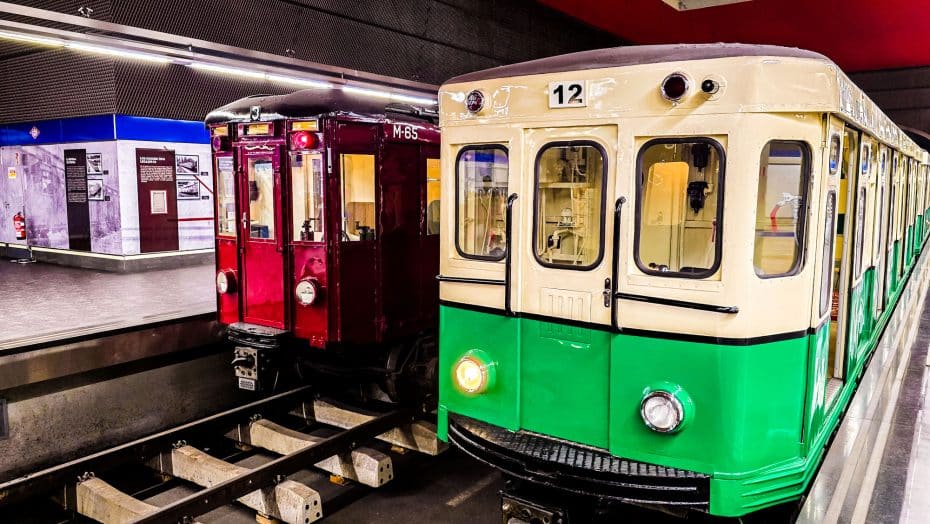
On October 17th, 1919, the Metro de Madrid opened its first line, running from Madrid’s city center to Cuatro Caminos. King Alfonso XIII inaugurated the service, which was born from the need for a rapid transit system to accommodate the city’s growing population and expansion. Designed by engineers Miguel Otamendi, Carlos Mendoza, and Antonio González Echarte, the network expanded rapidly over the decades.
Today, the Madrid Metro is one of the world’s most extensive subway systems, with over 300 stations and more than 290 kilometers (180 miles) of track. It serves over 600 million passengers annually and efficiently connects the city’s districts through its 12 main lines, three Metro Ligero (light rail) lines, and additional suburban connections.
Beyond its function as a transit system, the Madrid Metro also houses museums and historical exhibits, showcasing the city’s underground heritage. Restored stations such as the now-abandoned Chamberí, part of the original 1919 line, serve as time capsules of early 20th-century metro design. Other notable sites include archaeological remains at Ópera station and the unique Naves de Pacífico, an old power plant. Additionally, Chamartín station features a collection of historic trains, offering insight into the evolution of the network’s rolling stock over the decades. These Madrid Metro museums provide a fascinating way to explore Madrid’s history beneath its streets.
Museos del Metro de Madrid: History Underground
The Madrid Metro Museums offer a unique look at the underground history of the city’s transit system. Preserving original stations, historic trains, and archaeological remains, these museums provide a distinct perspective on how the metro system has adapted, showcasing its engineering feats and history.
How to Visit the Madrid Metro Museums
The Madrid Metro Museums, including Chamberí Station, the Chamartín Historic Train Collection, Ópera Station’s Caños del Peral Site, and the Pacífico Power Plant, all have free admission. Still, reservations must be made through the official website: museosmetromadrid.es. Additionally, each museum operates on specific schedules, so check the website for updated visiting hours and availability. Guided tours are a great way to dive into the history and technology of Madrid’s metro system, especially if you speak Spanish.
These are the different Museos del Metro de Madrid. We have ordered them based on how interesting we think they are to train-loving visitors like us.
1. Abandoned Chamberí Station
Plaza de Chamberí, s/n, 28010 | Iglesia (L1)
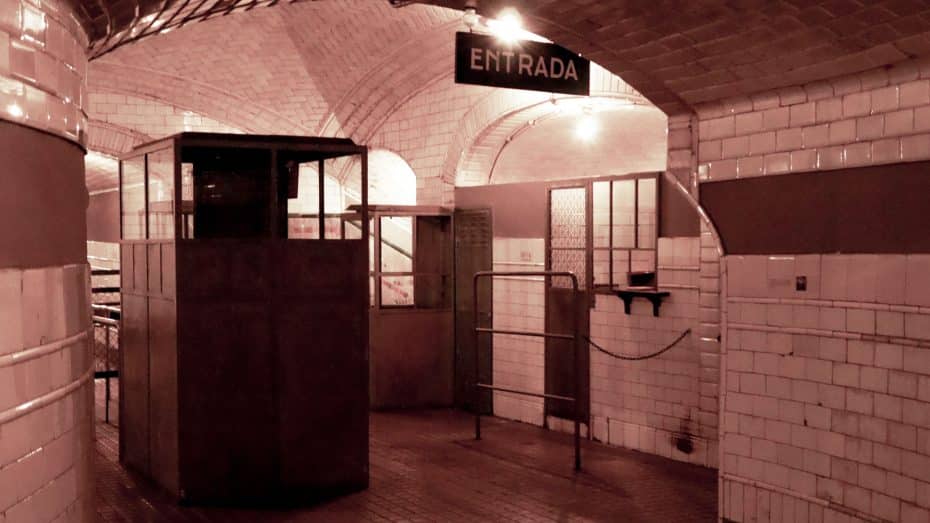
Chamberí Station, part of the original 1919 metro line, was designed by architect Antonio Palacios. It was closed in 1966 due to platform length limitations as Madrid introduced longer trains. Dubbed the “ghost station,” it remained untouched for decades until it was restored and reopened as a museum under the Platform 0 project in 2008. The station retains its original ceramic tilework, vintage signage, and period advertisements, preserving the aesthetic of early 20th-century Madrid.
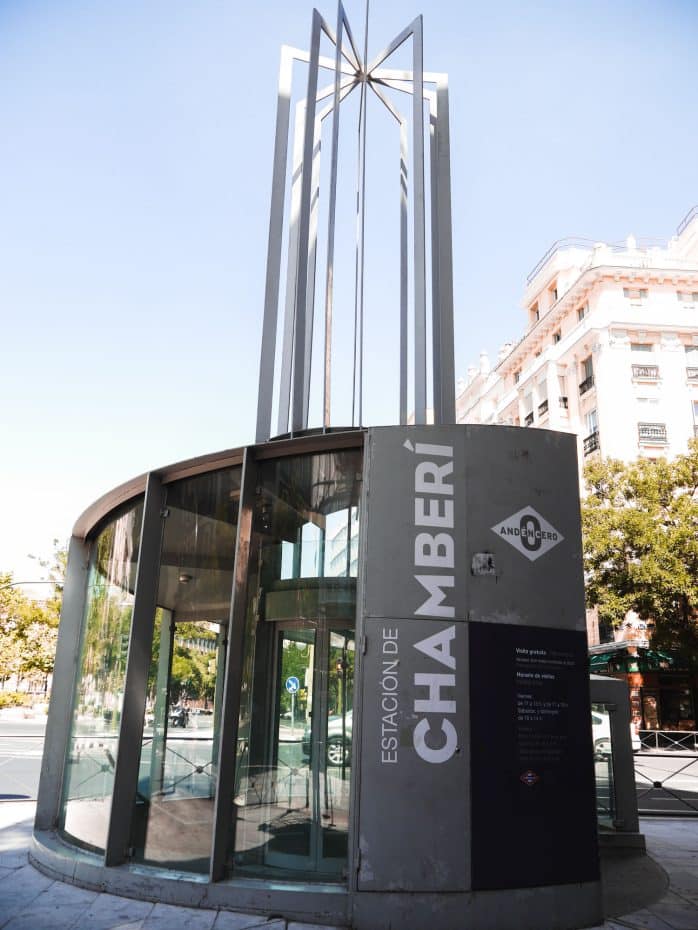
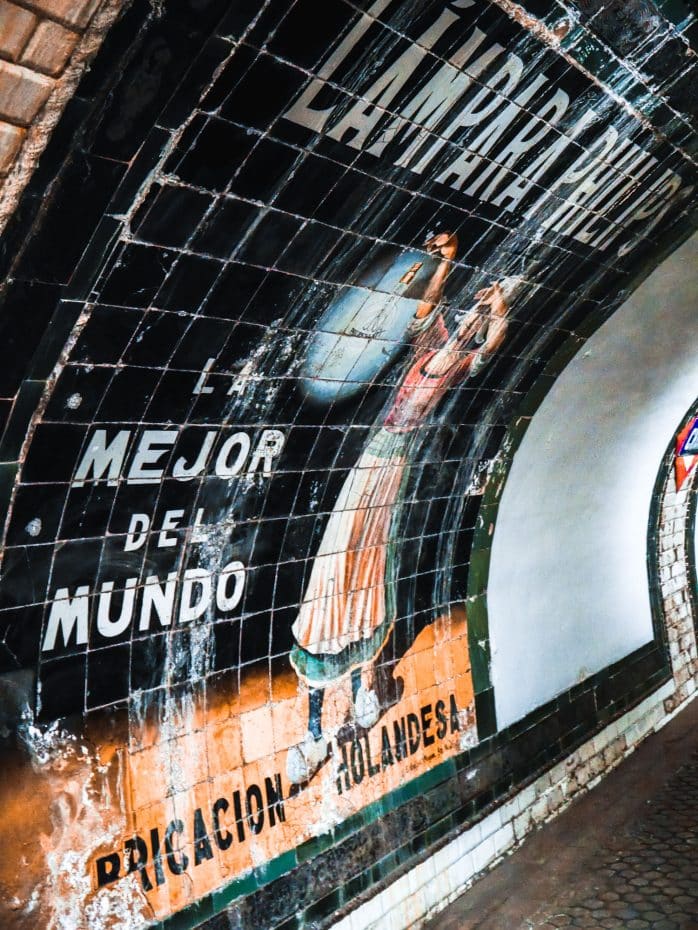
Keep in mind that Chamberí Station requires advance booking due to its limited capacity. Admission is free, but reservations must be made through museosmetromadrid.es. It is open on Fridays from 4:00 PM to 8:00 PM and on weekends from 10:00 AM to 2:00 PM. Guided tours are available. The entrance is located at Plaza de Chamberí, and the nearest metro stop is Iglesia (Line 1).
Insider tip: Many people book tickets but don’t always show up, so if you’re in Madrid for a short visit and can’t get a reservation, it’s worth heading to the station anyway. Since some spots go unused, you might get lucky by waiting in line for a last-minute cancellation. There’s no guarantee, but arriving early improves your chances of getting in.
2. Chamartín Historic Train Collection
Estación de Madrid-Chamartín Clara Campoamor | Chamartín (L1, L10)
Located within Chamartín station, this exhibition houses a collection of historic metro trains spanning different eras. The collection includes original cars from the 1919 fleet and other retired models, from the network’s inception to the introduction of modern rolling stock in the mid-20th century.
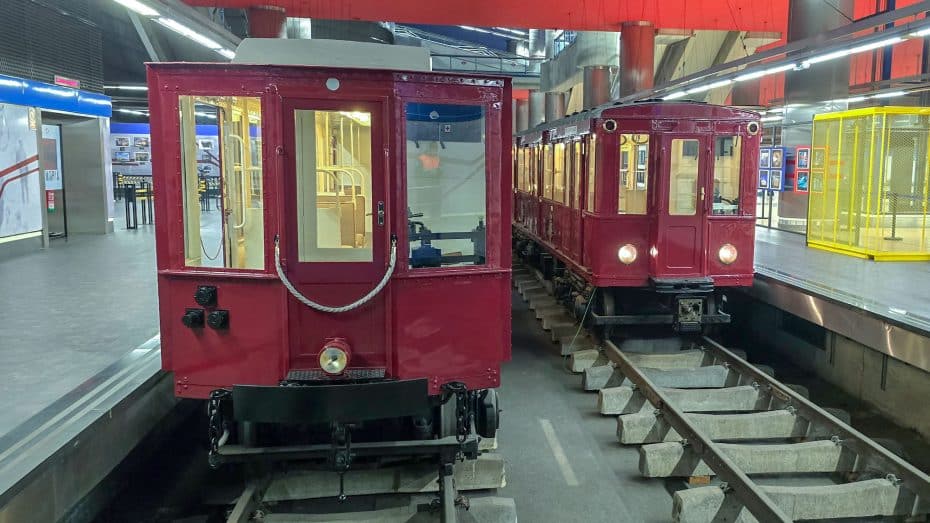
Here, you can see how metro travel evolved from its earliest days to the present. Among the notable models on display is the lavish 1919 Cuatro Caminos model, which featured fabric-covered seats and elegant lamps, a true vision of luxury for the masses. In contrast, the post-Civil War-era ‘Salamanca’ train grimly includes reserved spaces for ‘mutilated gentlemen.’
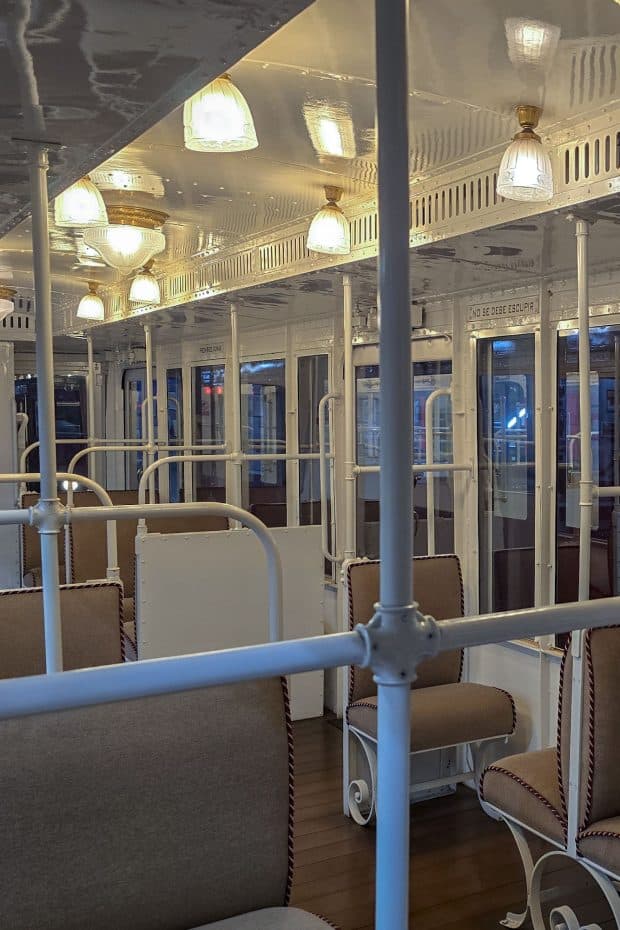
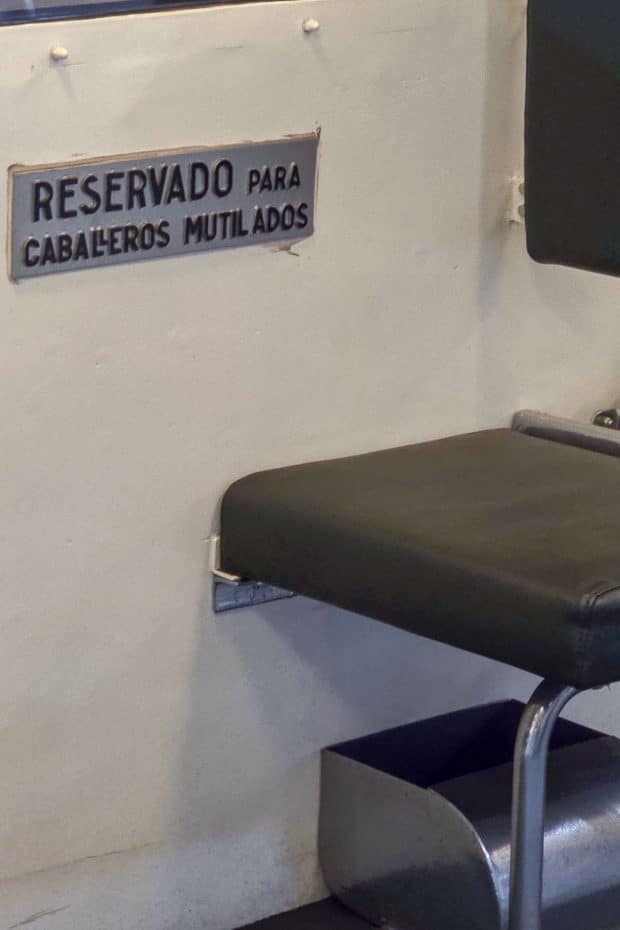
The most recent example item in the collection takes us to the 1960s bright green Series 1000 trains, the first to depart from the traditional red livery, which had, up to that point, been used on the rolling stock to symbolize the primary color of Madrid’s flag.
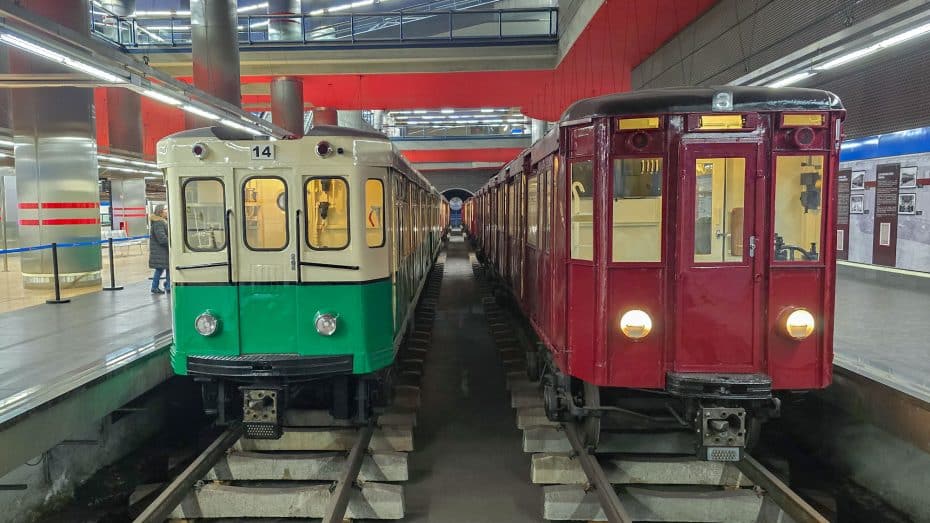
In addition to the actual trains, there are several informational panels, models, and historic photographs detailing the evolution of Metro de Madrid’s technology, network growth, architecture, and the main events on the network.
The collection is located right on the platforms at Chamartín station. You can follow the signage within the station to find the exhibition. Check the official Metro de Madrid website to book guided tours and for updated schedules.
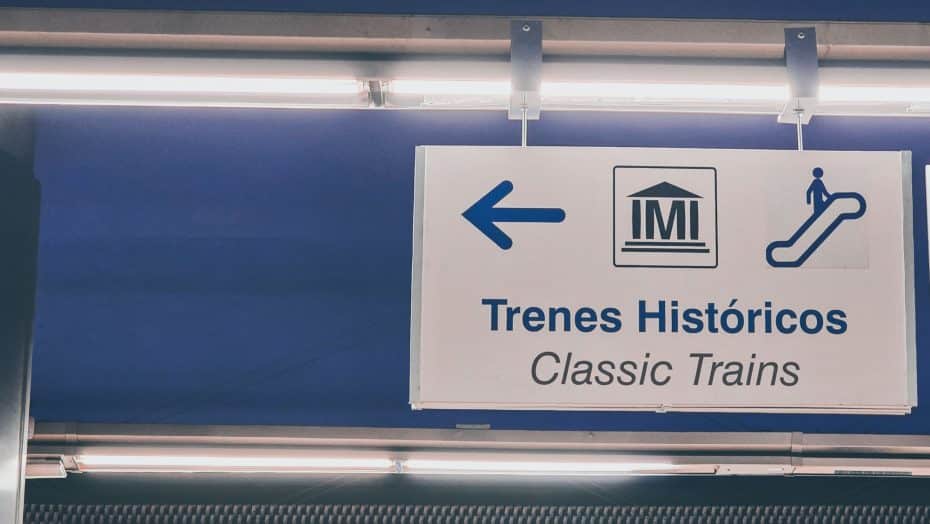
3. Caños del Peral Site
Plaza de Isabel II, s/n. 28013 | Ópera (L2, R)
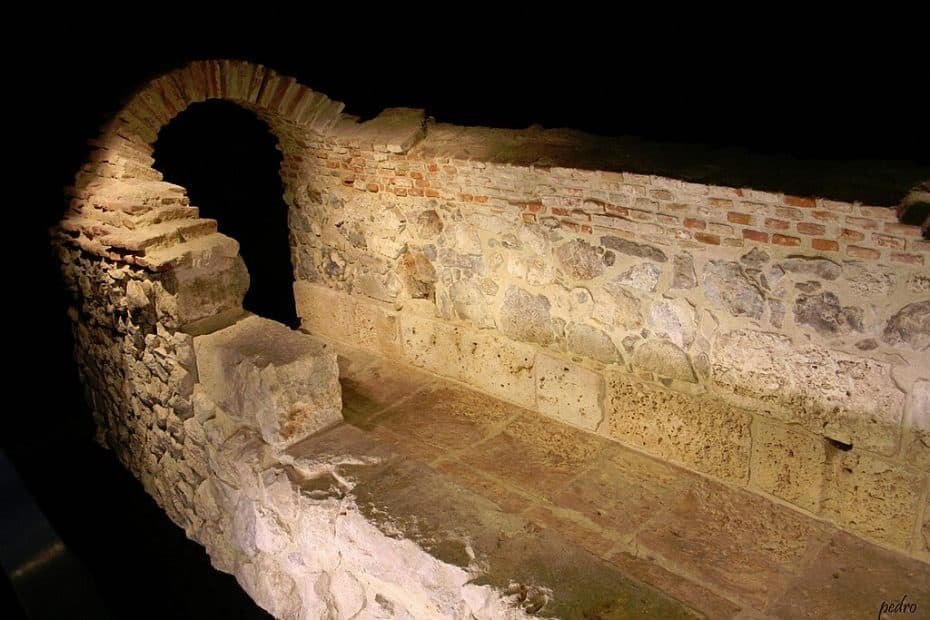
The Caños del Peral Site, while not directly related to the metro, is still a fascinating part of the Museos del Metro de Madrid network. It provides a unique insight into the historical infrastructure of Madrid as it transformed from a sleepy village to Spain’s capital.
During renovation work at Ópera station in 2009, construction workers uncovered a 17th-century water system built to supply nearby palaces and public fountains. The system fell into disuse in the 19th century and was eventually buried as the city expanded. Over time, archaeologists have revealed sections of an aqueduct, a fountain, and an ancient canal.
These remains were preserved and incorporated into the station as a historical exhibit, which you can view through glass enclosures. The site is open to the public within Ópera station. It also has informative displays explaining its discovery and restoration.
4. Pacífico Power Plant
C. de Valderribas, 49, 28007 | Pacífico (L1)
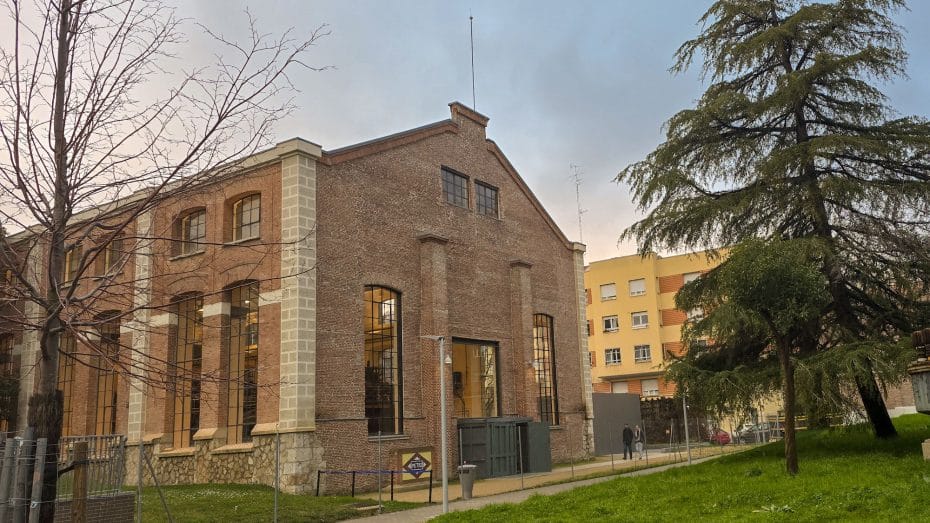
The Pacífico Power Plant (Nave de Motores de Pacífico) was built between 1922 and 1923 to provide an independent power source for the Madrid Metro. Designed by Antonio Palacios, this facility housed massive diesel engines and generators that supplied electricity to the expanding metro network. During the Spanish Civil War, it was crucial in sustaining Madrid’s power grid when other sources were compromised.
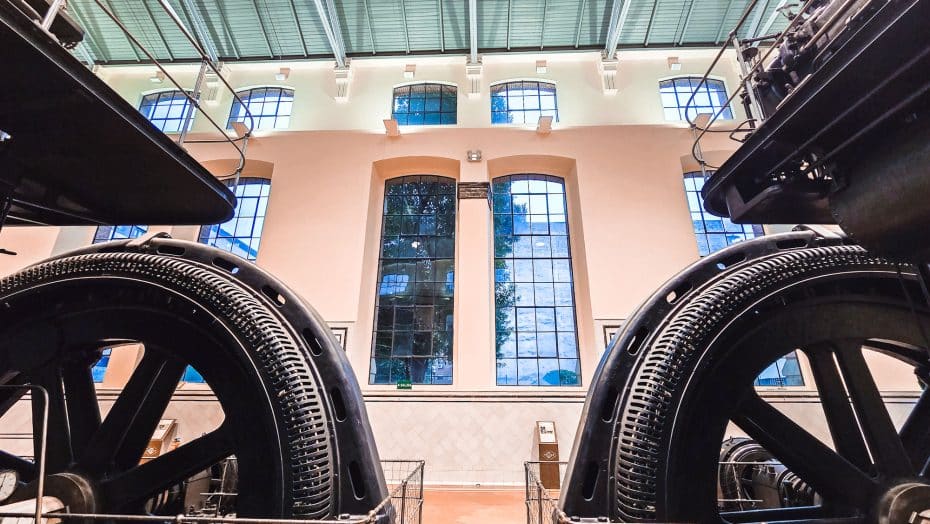
Although it looks vintage enough to feature in a steampunk-inspired fever dream, the plant remained surprisingly operational until the 1970s, when technological advancements (and noise complaints from the neighbors) forced it to close down.
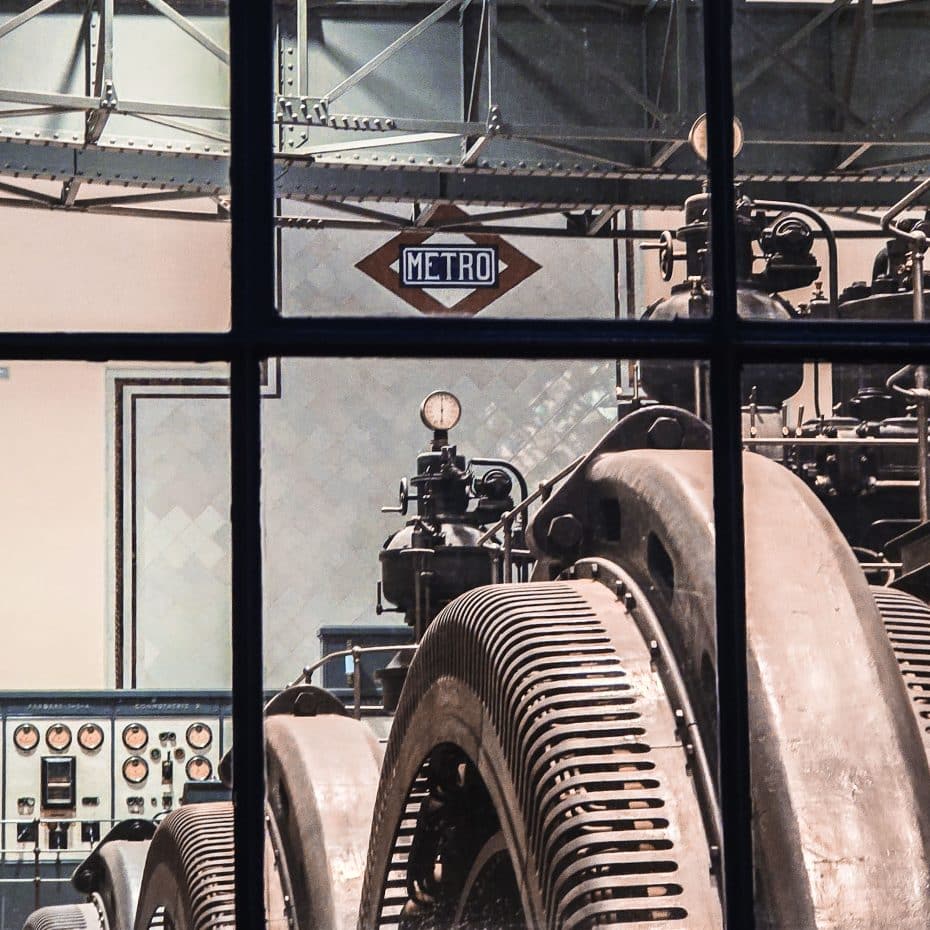
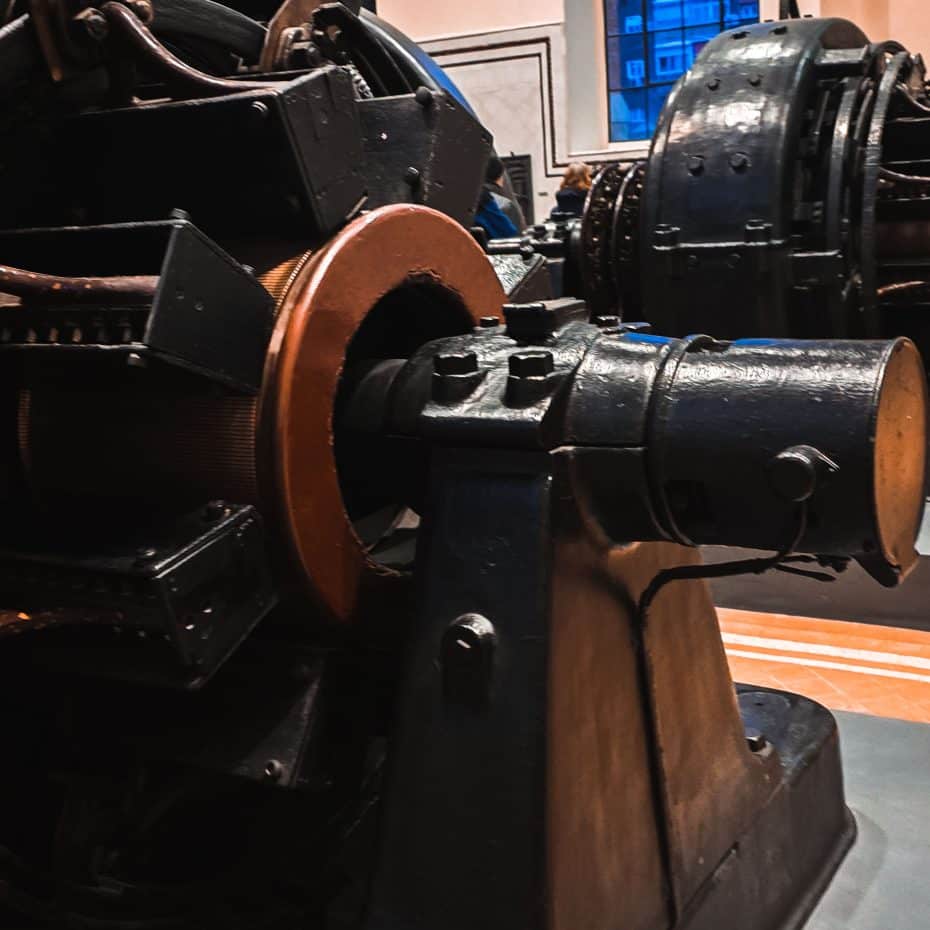
Today, the Pacífico Power Plant is a museum showcasing the industrial heritage of Madrid’s metro system. The display includes original engines, control panels, and mechanical equipment used to power the early metro lines. The site is open for guided tours on select days.
Other Madrid Sites for Train Enthusiasts
Beyond the Madrid Metro Museums, the Spanish capital offers several other railway-related sites for train lovers. These locations are perfect for travelers who, like us, are interested in everything train-related or families looking for a fun and educational experience.
Delicias Station & Spain’s Railway Museum
Paseo de las Delicias, 61, 28045 | Delicias (L4)
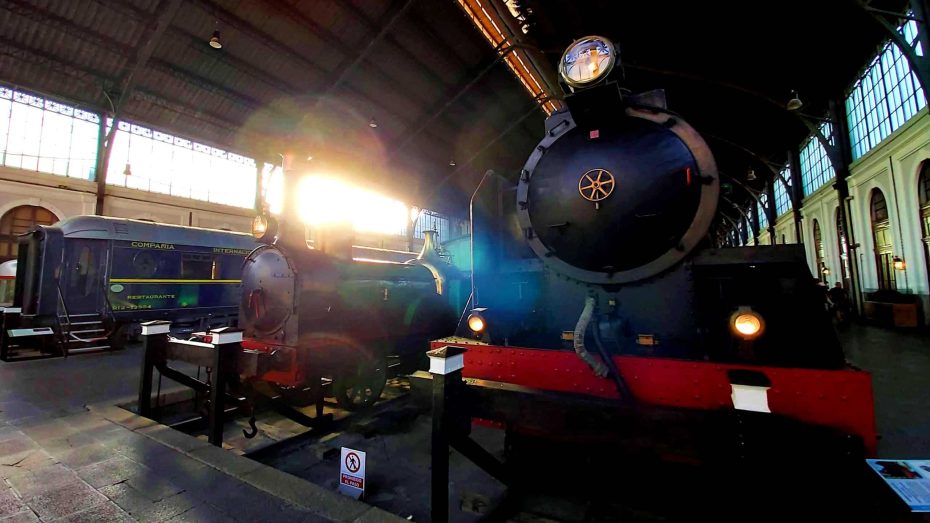
Located in the former Delicias Station, Madrid’s Railway Museum (Museo del Ferrocarril) was established in 1984 and houses one of the most comprehensive collections of historic trains and railway artifacts in Spain. Delicias Station itself, inaugurated in 1880, was one of Madrid’s first major railway hubs and remains an architectural landmark of 19th-century iron and glass construction. The museum features steam, diesel, electric locomotives, vintage railway carriages, and signaling equipment. Located near the Delicias Metro Station, it is open year-round, with guided tours and occasional themed events, including the historical Tren de la Fresa.
Tren de la Fresa
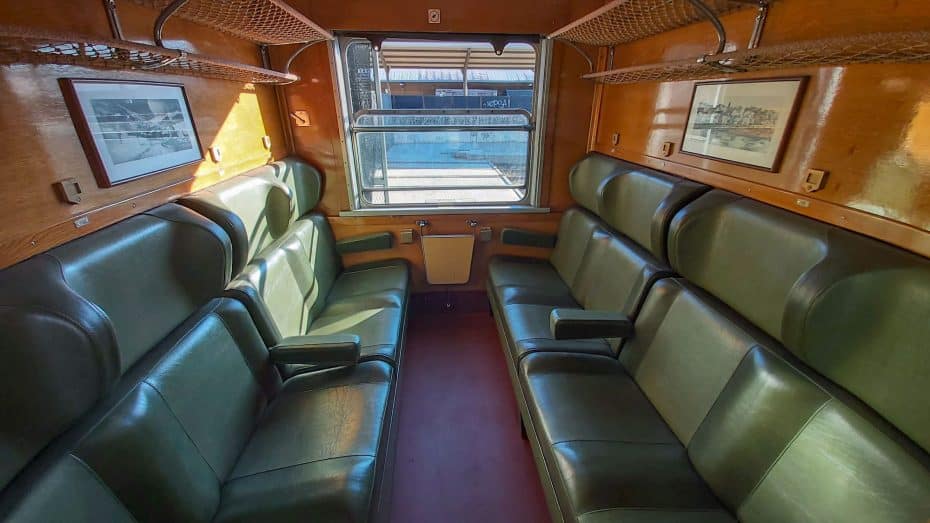
The Tren de la Fresa (Strawberry Train) is a heritage railway experience that recreates the first railway journey in the Madrid region, which connected Madrid with Aranjuez in 1851. The original line, commissioned by Queen Isabella II, was Spain’s second railway and played a key role in transporting goods and passengers between the capital and the royal gardens of Aranjuez. The name “Strawberry Train” originates from Aranjuez’s long-standing reputation for producing some of Spain’s finest strawberries.
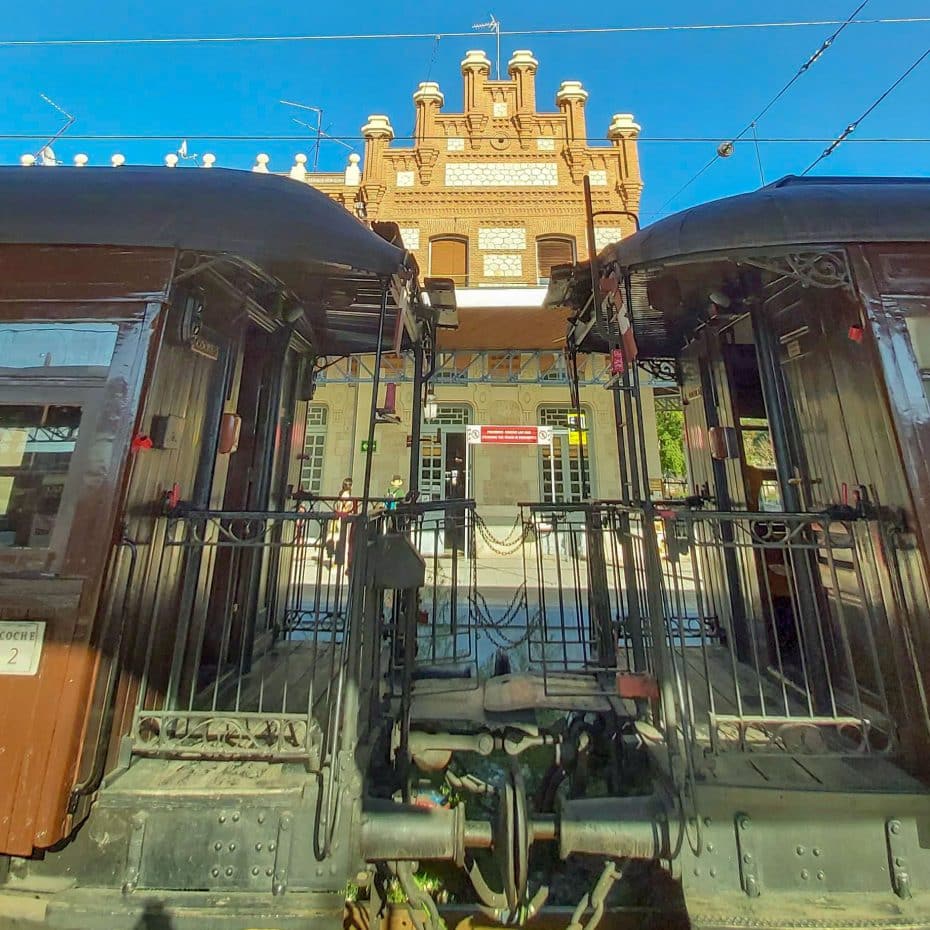
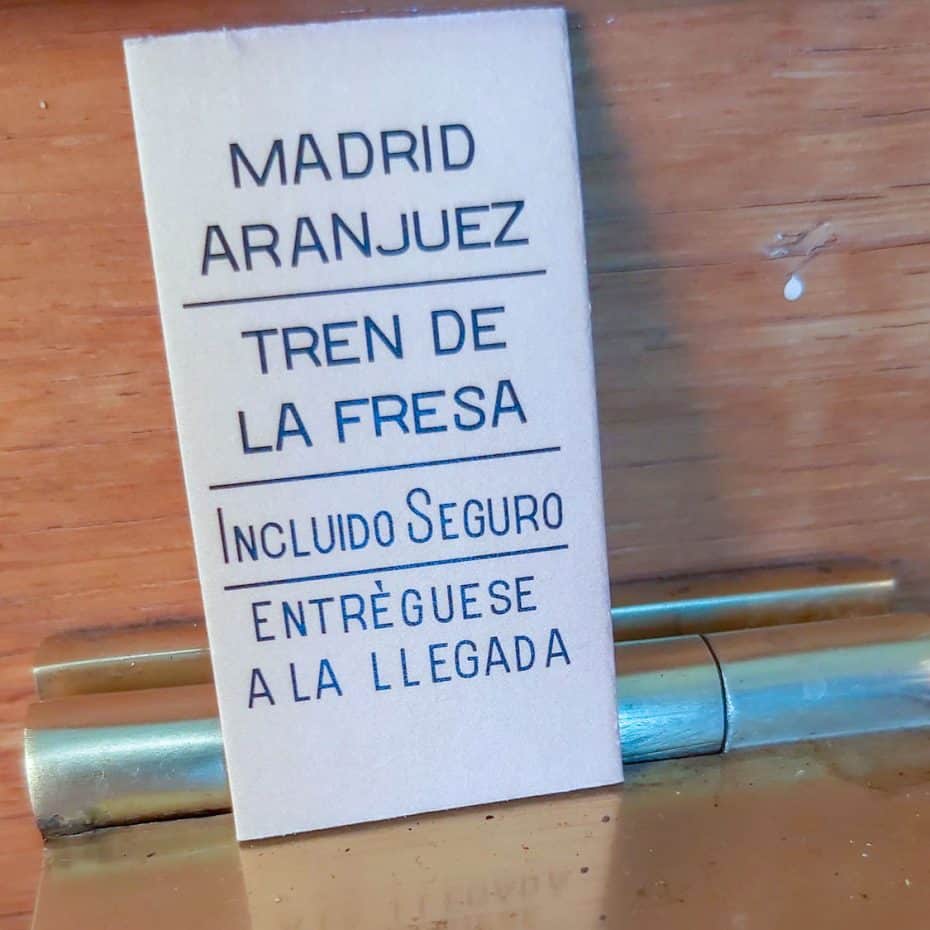
The train journey features restored wooden carriages pulled by vintage locomotives, as well as a serving of local strawberries during the ride. The train runs on select weekends from spring to autumn, departing from Madrid’s Railway Museum and following the historic route to Aranjuez, where you can explore the town’s royal gardens and historic sites.
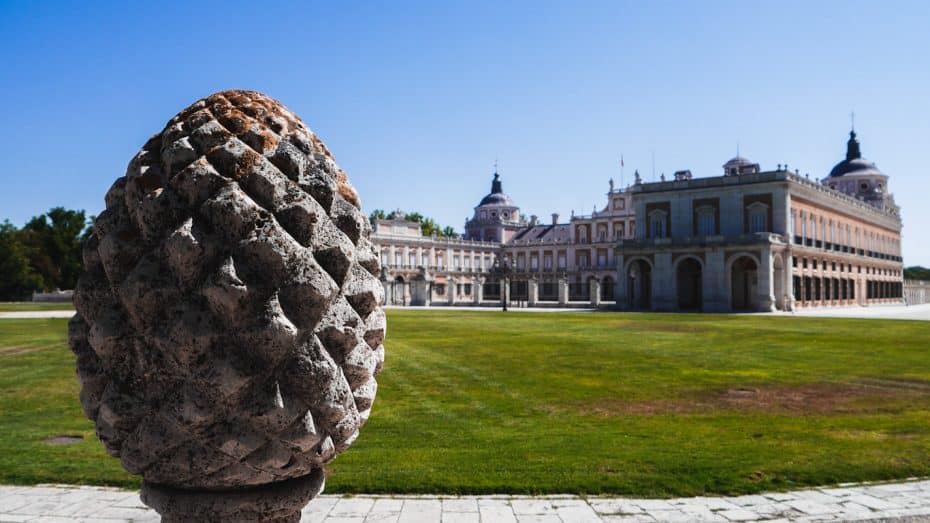
Tickets for the Tren de la Fresa must be booked in advance through the Madrid Railway Museum website, at Renfe stations, or by phone at 912 320 320. Prices vary depending on the package chosen, with standard round-trip fares starting at approximately €25 for adults and €15 for children. The ticket includes the train ride, guided visits to selected sites in Aranjuez, and onboard strawberry tastings. For updated schedules, pricing, and availability, visit the official Madrid Railway Museum website or Renfe’s official channels before planning your trip.
Atocha Station Historic Building
Pl. del Emperador Carlos V, s/n, 28012 | Estación del Arte (L1)
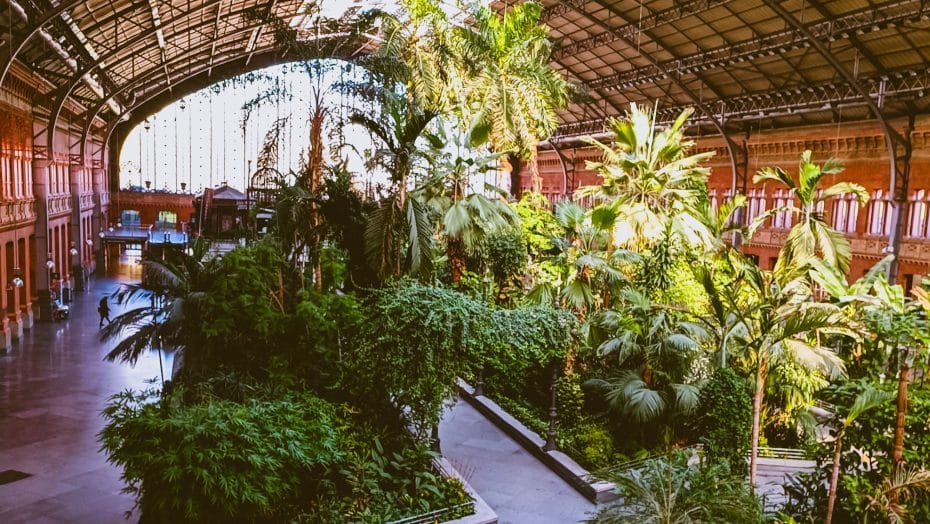
Atocha Station, Madrid’s main railway terminal, opened in 1851, underwent a significant transformation in 1992. The original iron-and-glass station building, considered one of Spain’s most beautiful train stations, was repurposed into a tropical greenhouse when the modern high-speed train terminal was built. This space now houses over 7,000 plants from different continents, creating a unique fusion of historic railway architecture and natural lushness.
The greenhouse is a must-see for visitors passing through Atocha Station, offering a tranquil setting amid the bustle of Spain’s busiest transport hub. It is freely accessible to the public, making it an ideal stop for those interested in railway history and exotic plant life.
Gran Vía Station Monumental Entrance
Gran Vía, 55, 28013 | Gran Vía (L1, L5)
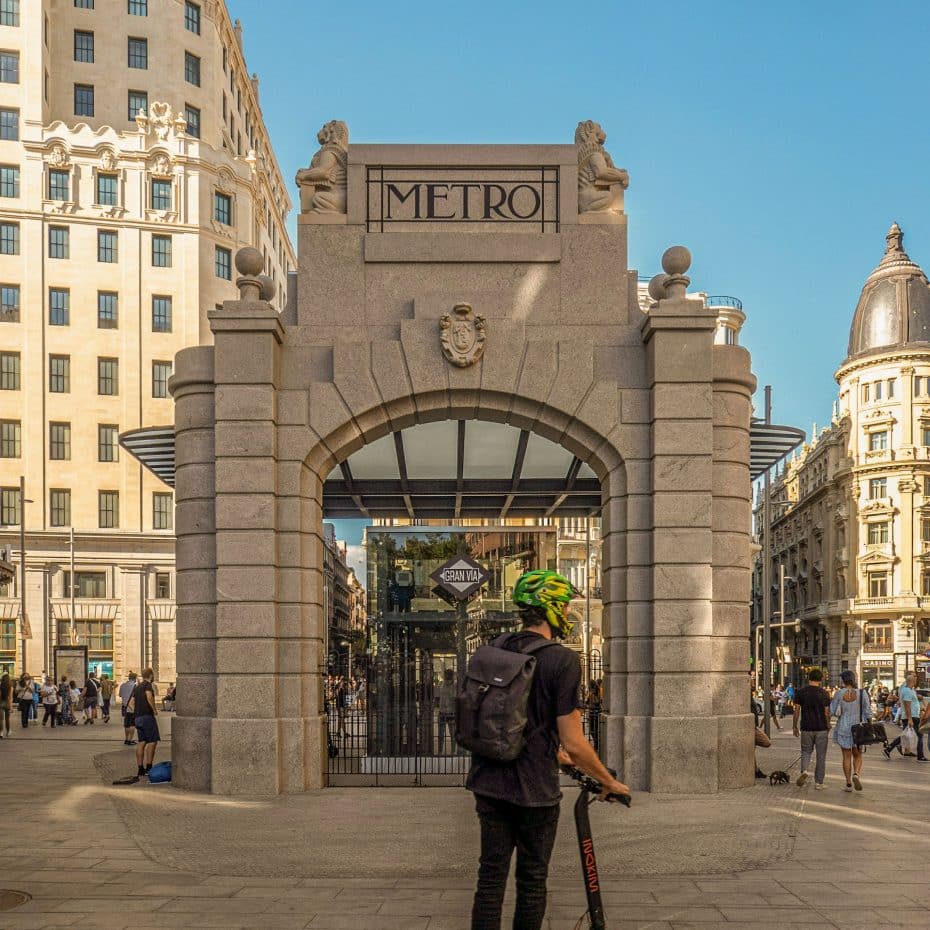
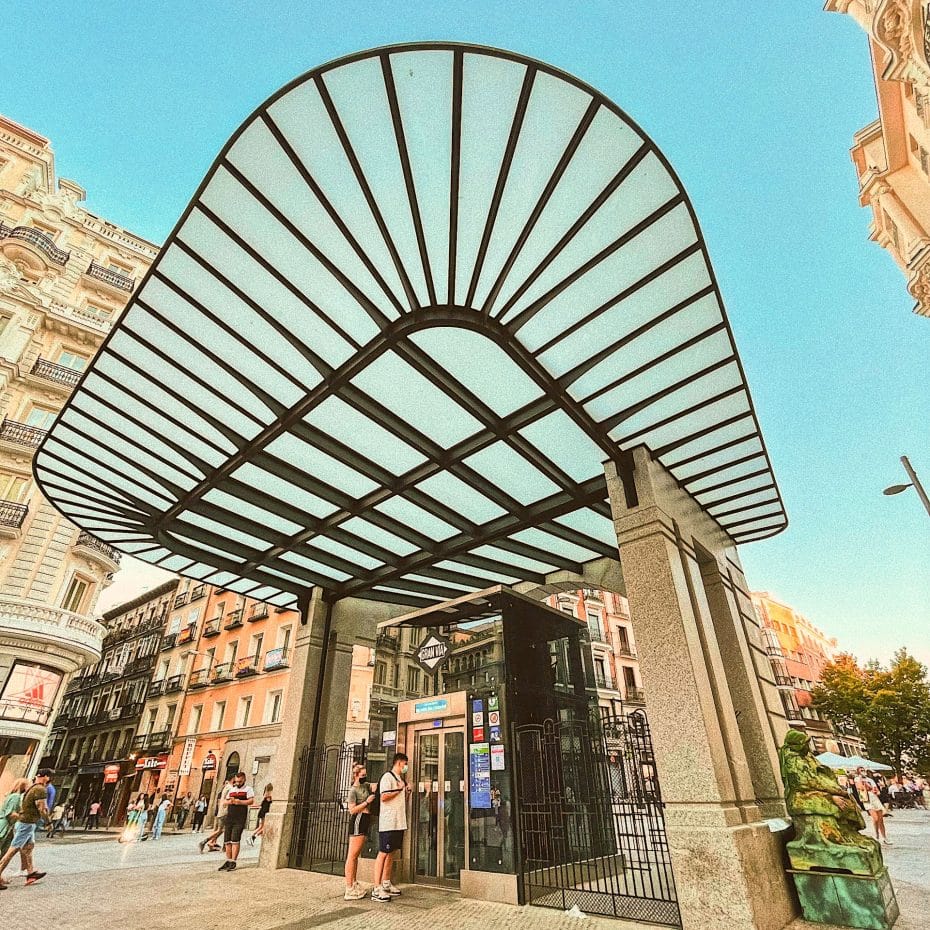
The Gran Vía station in Madrid, originally opened in 1919 as Red de San Luis, was one of the first stations in the Madrid Metro network. Its most iconic feature was the entrance pavilion designed by Antonio Palacios, a key figure in Madrid’s early 20th-century architecture. The pavilion, constructed from granite and iron, featured a monumental design with neoclassical and Art-Dèco influences, aligning with Palacios’ vision of integrating grandeur into functional infrastructure. The building was dismantled in the 1970s and relocated to the town of O Porriño, the architect’s hometown.
Luckily for us, as part of a major station renovation, a reconstructed version of Palacios’ entrance was unveiled in 2021. The restored entrance replicates the original structure with its imposing stonework and detailed iron features. Inside, a small exhibition area displays historical documents, photographs, and original metro artifacts related to the station’s history.
Pacífico Station Lobby
Calle del Doctor Esquerdo, 219, 28007 | Pacífico (L1)
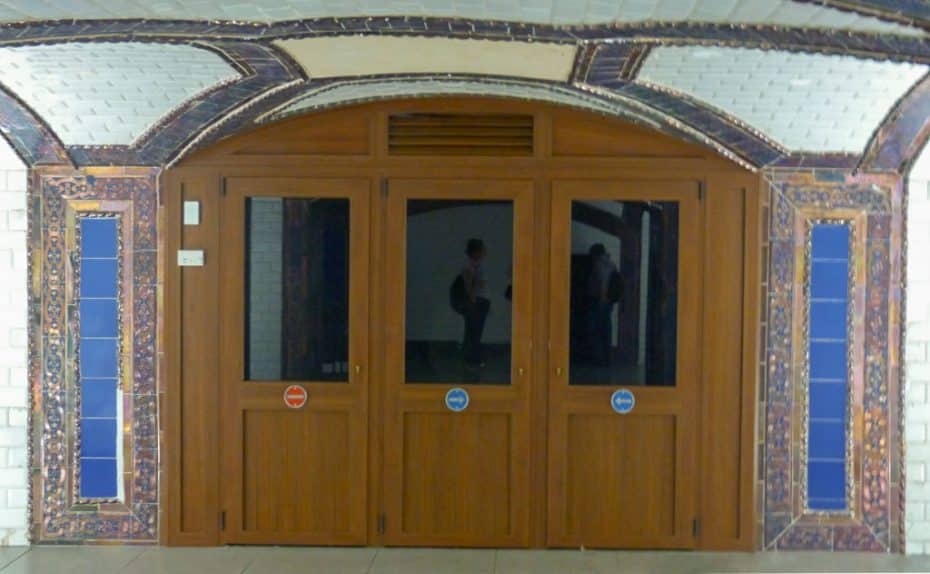
Pacífico Station, inaugurated in 1923, was a key part of Madrid Metro’s first expansion. It originally housed essential metro control facilities and maintenance offices, which was vital in managing the network’s operations as the city’s underground system grew. The station was named after the nearby Avenida del Pacífico (now Avenida de la Ciudad de Barcelona). Today, a section of the station has been preserved as a museum space, showcasing its original signage, vintage metro maps, and early ticket machines.
Brief History of the Madrid Metro: From 1919 to Today
Madrid’s metro system was conceived in the early 20th century as a response to increasing urban congestion and the need for a modern transportation solution. After nearly a decade of planning and feasibility studies, construction began in 1917, and on October 17, 1919, King Alfonso XIII inaugurated the first line, which consisted of consisted of just eight stations and connected Sol to Cuatro Caminos.
The privately owned Compañía Metropolitana de Madrid, led by engineers Miguel Otamendi, Carlos Mendoza, and Antonio González Echarte, was in charge of the project’s execution. There were initial doubts about its success. However, its immediate popularity led to the expansion of Line 1, which was extended to Atocha in 1921, and the planning of Line 2, which opened in 1924 from Sol to Ventas.
During the Spanish Civil War (1936-1939), the metro played an essential role in Madrid’s defense. Many stations were reinforced to protect civilians from aerial bombardments. The Spanish government took control of the metro in 1941, converting it into a public company.
The post-war period saw a resurgence in metro construction, with significant expansions taking place during the 1940s and 1950s. The 1970s brought substantial milestones, including the introduction of Line 5, and the launch of the first metro cars with automatic doors.
The 1990s and early 2000s marked the most extensive growth in the network’s history. In just over a decade, the metro doubled in size, reaching over 220 kilometers (137 miles) by 2003. Key expansions included the extension to Madrid-Barajas Airport.
Today, Madrid Metro is the most extensive metro system in Spain, the third-largest in Europe after Moscow and London, and the eighth-largest globally, just after New York City and Guangzhou.
Madrid Metro Fun Facts and Specs
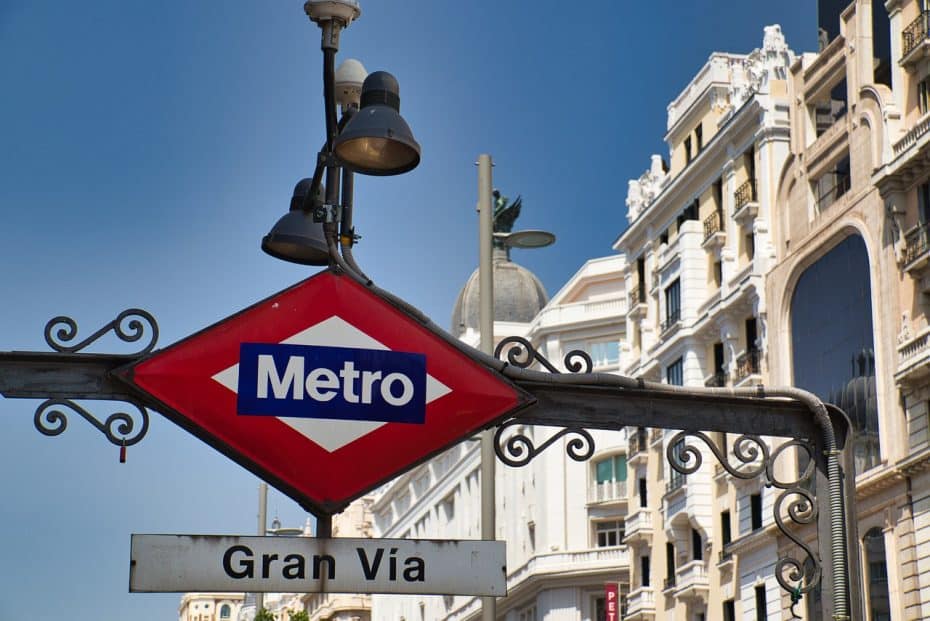
Madrid’s metro system is more than just a way to get around—it’s packed with history, curious details, and surprising facts. From its royal inauguration to hidden tunnels and unusual design choices, here are some fun and little-known facts about Metro de Madrid.
How old is Madrid Metro?
The Metro de Madrid opened on October 17, 1919, making it over a century old. It was inaugurated by King Alfonso XIII, who personally purchased shares to support the project. The first line ran 3.5 kilometers (2.2 miles) between Sol and Cuatro Caminos.
How long is Madrid Metro?
Madrid Metro operates across 12 lines, three Metro Ligero (light rail) lines, and additional suburban connections, with a total of 302 stations. The network serves over 600 million passengers annually, making it one of the busiest metro systems in Europe.
The longest line in the network is Line 12 (MetroSur), spanning 40.9 kilometers (25.4 miles) with 28 stations, forming a loop around the southern suburbs of Madrid. In contrast, the shortest is Line R (Ramal), which runs just 1.1 kilometers (0.68 miles) between Ópera and Príncipe Pío, which is an important transport hub for suburban services.
Is Madrid’s metro system the longest in Spain?
Metro de Madrid’s 294 kilometers (183 miles) makes it the most extensive metro system in Spain and, actually, in the European Union, surpassing both the Paris Métro and the Berlin U-Bahn in total length.
A logo you’ve probably seen before
The Madrid Metro logo has undergone very few transformations since its inception.
The original logo, introduced in 1919, was designed by architect Antonio Palacios. Heavily inspired by the London Underground, he adapted its roundel into a diamond shape with a red border and a blue rectangle in the center, displaying the word ‘Metro’ in white. This design was intended to be highly visible and easily recognizable.
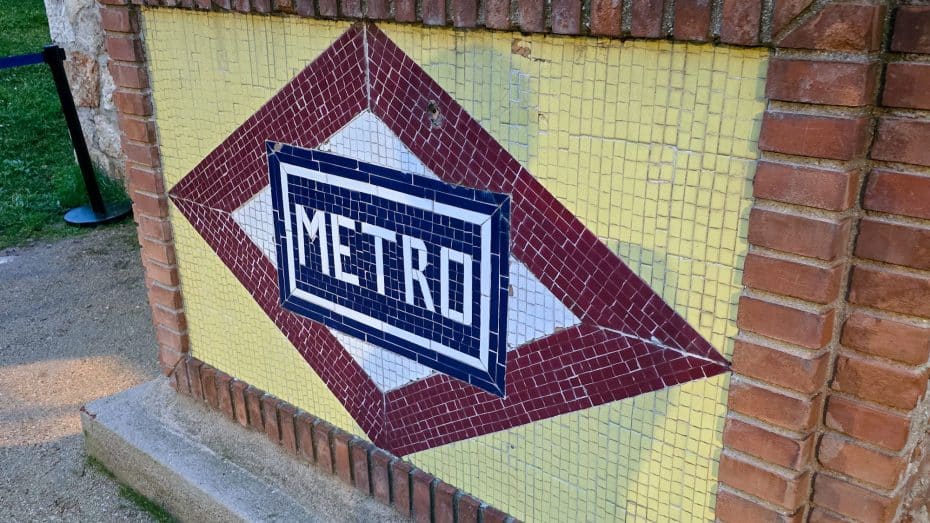
Curiously, the first batch of the metro’s rolling stock featured the Coat of Arms of the Villa de Madrid. This design included the royal crown, the iconic Oso y el Madroño (the Bear and the Strawberry Tree), and the seven stars from Madrid’s flag, representing the Ursa Major constellation.
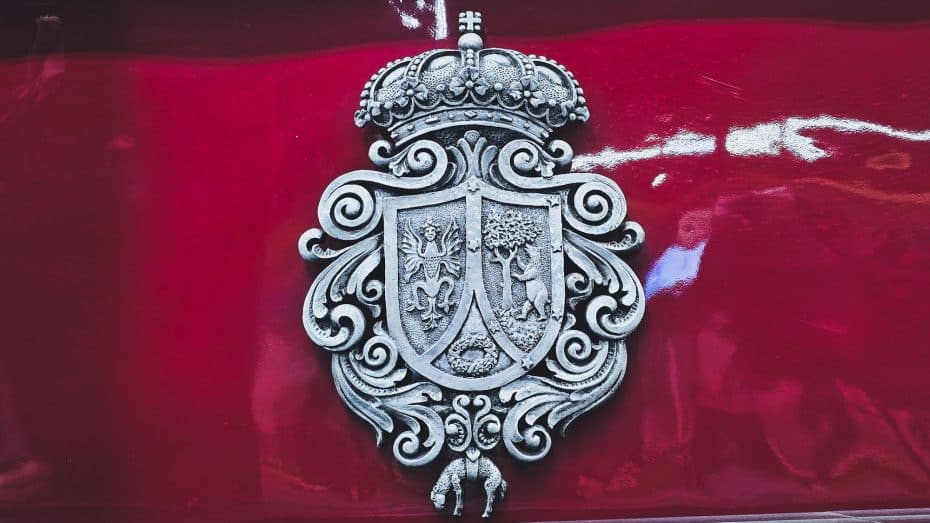
In 1924, slight modifications were made to standardize the font and proportions. The logo remained largely unchanged until an experimental redesign in the early 1960s, which briefly introduced a circular emblem with a more minimalist aesthetic. However, this change did not gain public acceptance.
Metro de Madrid Specs
The system operates using standard gauge tracks (1,435 mm) and has both narrow-profile and wide-profile rolling stock. The narrow-profile trains used mainly on Lines 1, 2, 3, 4, 5, and R measures approximately 2.3 meters in width, whereas the wide-profile trains used on other lines measure about 2.8 meters. The metro runs on 600V DC power supplied via a third rail, except for newer extensions with overhead catenary systems at 1,500V DC.
How deep is Madrid’s Metro?
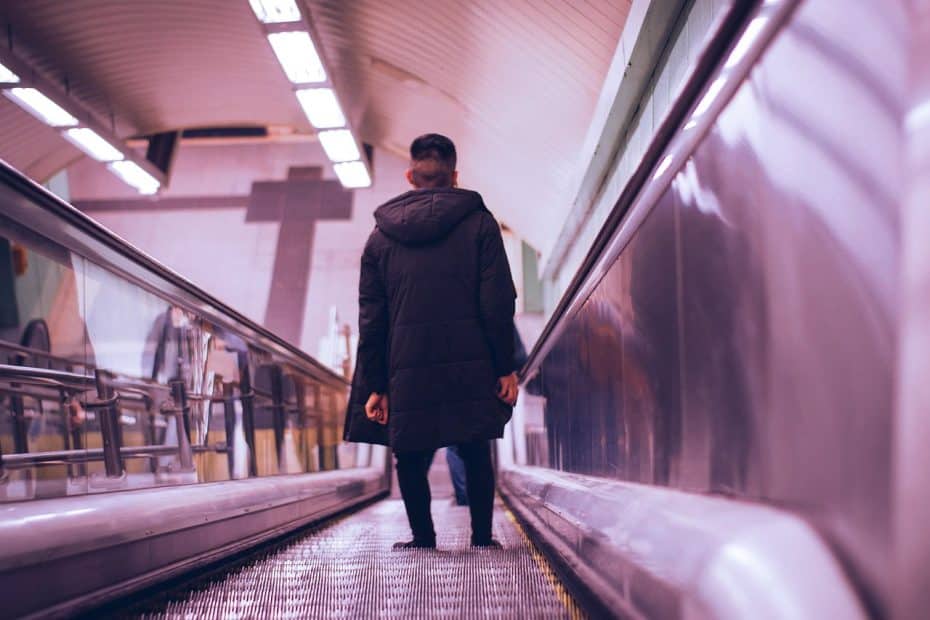
One of the unique aspects of the Madrid Metro is its depth variation. While most stations are relatively shallow, Cuatro Caminos, one of the original 1919 stations, is among the deepest at around 45 meters (148 feet) below the surface. The network also features the longest escalator in Spain, located at Paco de Lucía station, measuring 100 meters (328 feet) in length and 15 meters (49 feet) in height.
A metro system with two circular lines
Madrid Metro has two circular lines: Line 6 (the Grey Line) and Line 12 (MetroSur). Line 6, completed in 1995, is an underground ring that encircles the city center, improving connectivity between radial lines without transferring through central hubs. Meanwhile, Line 12, inaugurated in 2003, serves as a suburban loop connecting towns south of Madrid. Few metro systems worldwide have two full circular lines; most, like London and Berlin, have just one. Moscow’s system, like Madrid’s, features multiple loops.
A network of confusing names
For years, Madrid had two similarly named metro stations, Atocha and Atocha-Renfe, which frequently caused confusion among passengers. To resolve this, in 2018, Atocha-Renfe was renamed simply Atocha, while the original Atocha station was renamed Estación del Arte to highlight its location near Madrid’s most famous museums.
Meanwhile, in 2013, Sol Station temporarily became Vodafone Sol, marking Spain’s first sponsored metro station name—though the branding was removed in 2016. Another odd case is Gregorio Marañón Station, which isn’t near Gregorio Marañón Hospital but was named after the adjacent boulevard instead.
A full library within a station
Cuatro Caminos Station features a public book exchange area, where commuters can borrow and donate books while waiting for their train.
A very proud metro station
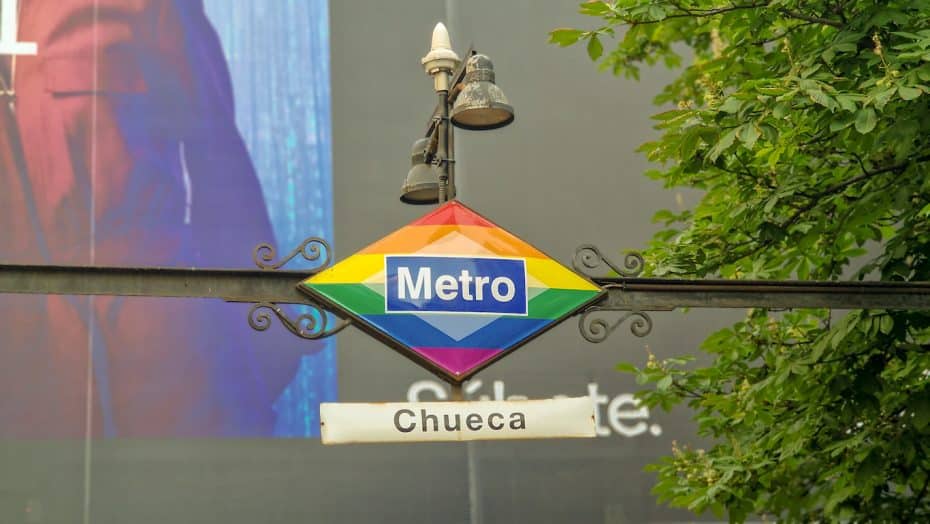
In 2018, Chueca Station, located in Madrid’s LGBTQ+ neighborhood, was temporarily rebranded to celebrate Madrid Pride. The station’s décor was altered to feature the rainbow flag. The redesign was so successful that the station permanently adopted the rainbow-themed signage, including on its main sign in Chueca Square.
Similarly, in 2021, Plaza de España Station received a redesign that prominently featured the Spanish flag across its walls and signage. The update sparked discussion about the increasing use of national symbols in public infrastructure.
Where’s the abandoned metro station in Madrid?
Chamberí Station, part of the original 1919 metro line, was closed in 1966 because its platforms were too short for the new, longer trains. It remained hidden for decades until reopening as part of the Andén 0 Museum in 2008.
What’s the most architecturally unique station in Madrid?
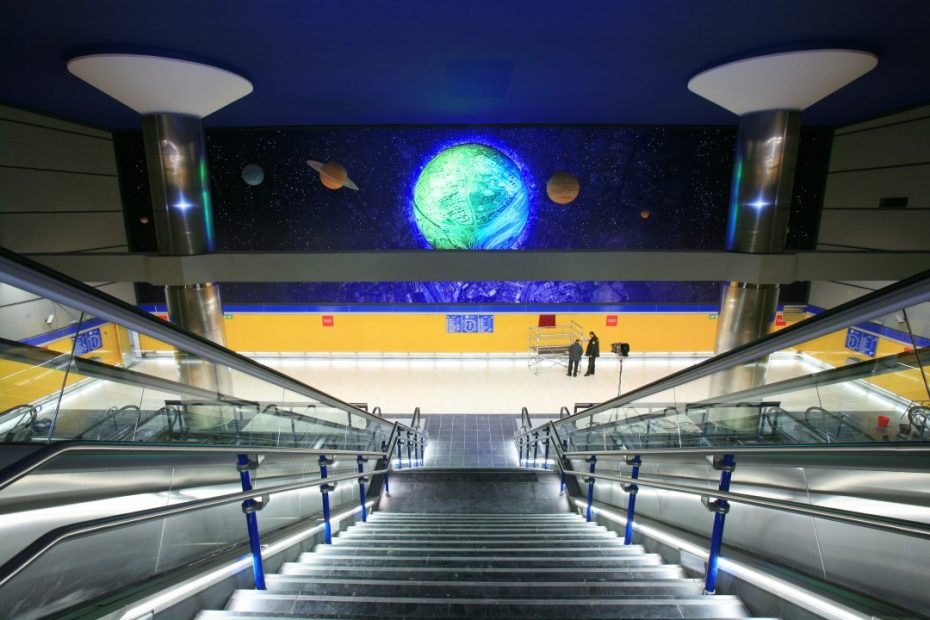
Arganzuela-Planetario Station on Line 6 stands out for its futuristic design, incorporating elements that resemble a space observatory, reflecting its proximity to Madrid’s Planetarium.


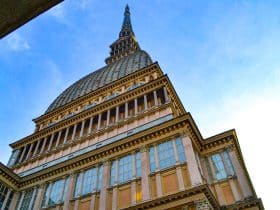
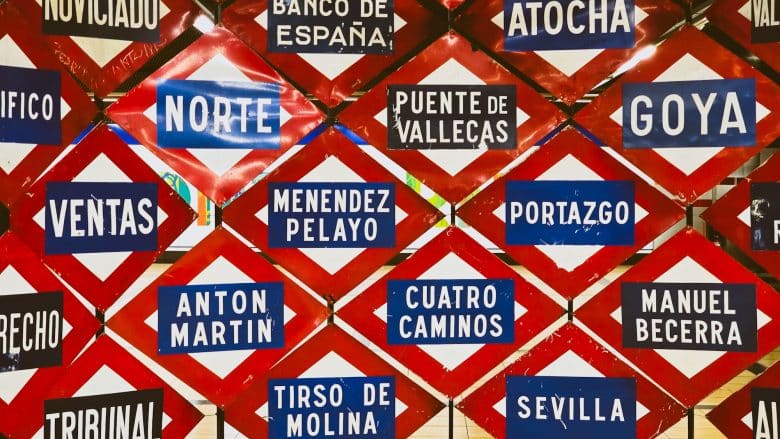
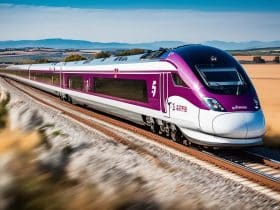
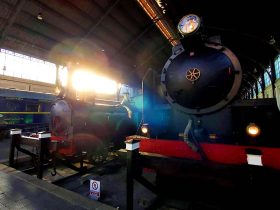
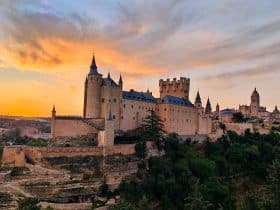
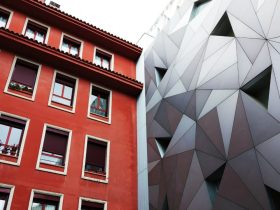
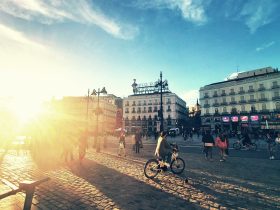
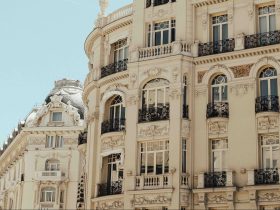

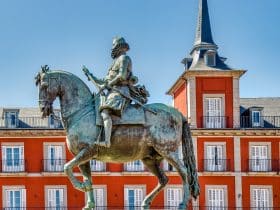

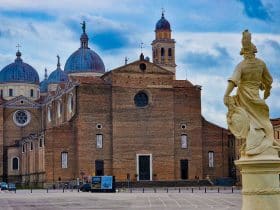

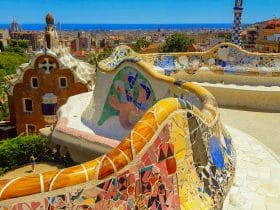
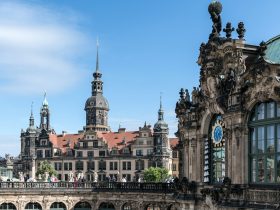
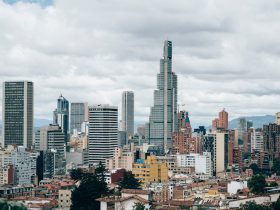

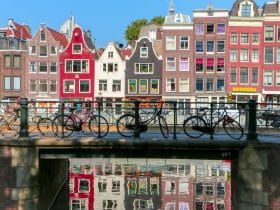
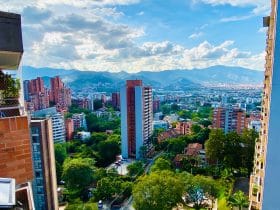
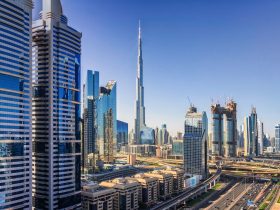
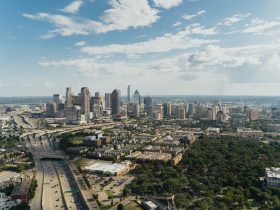
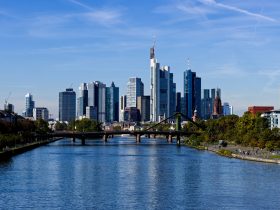
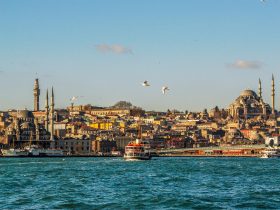

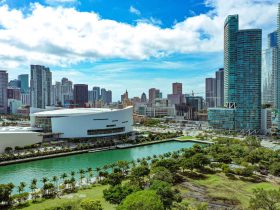

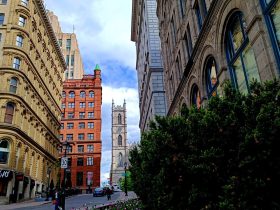
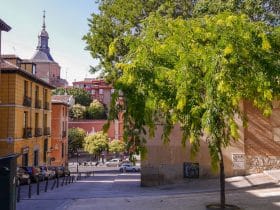

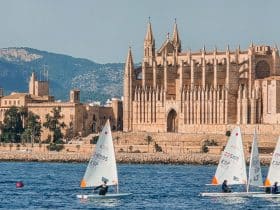
Leave a Reply
View Comments